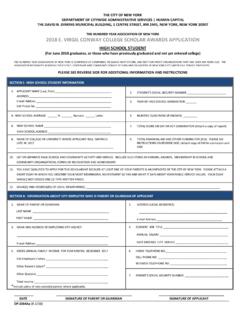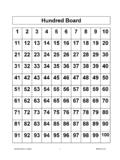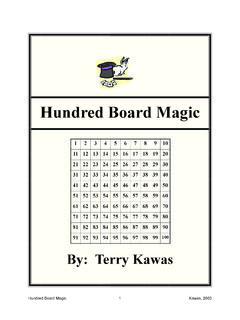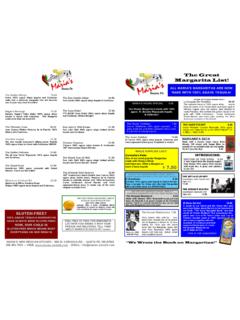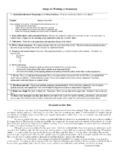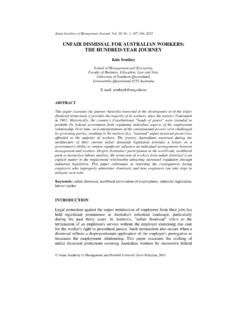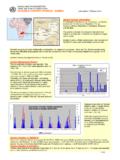Transcription of The Hundred Syllable Vajrasattva Mantra
1 1 The Hundred Syllable Vajrasattva Mantra . Dharmac r Jayarava1 The Sanskrit version of the one Hundred Syllable Vajrasattva Mantra in the Puja Book of the Friends of the Western Buddhist Order (the FWBO) follows the edited text produced by Dharmac rin and Sanskritist Sthiramati (aka Dr. Andrew Skilton) in his article: The Vajrasattva Mantra : Notes on a Corrected Sanskrit Text. Sthiramati s original brief was to provide diacritical marks so that the Sanskrit words were spelled correctly. However he went beyond the scope of merely providing proper diacritics to discuss problems with the structure and spelling of the Mantra after consulting a number of printed books and manuscripts in a variety of scripts and languages. Since the edited version produced by Sthiramati was adopted some 19 years ago, the problems with the older version used before that are less relevant to members of the Western Buddhist Order (WBO) except in one case which I discuss In this article I will offer a summary of the salient points of Sthiramati s lexical and grammatical analysis, along with my own glosses of the Sanskrit.
2 By this means, I hope to create an annotated translation that lays open the Sanskrit to anyone who is interested. Sthiramati s interpretation differs in some important respects from the traditional Tibetan one, but does so in ways that help to make sense of the Sanskrit - for instance in several cases he suggests breaking a sandhi 3 one letter along in order to create a straightforward Sanskrit sentence that was otherwise obscured. In the second part of the article I will address the problem of errors in transmission and how these might have come about in the case of this Mantra . I will try to show that these errors are likely to have been introduced by a misreading of the text rather than a mishearing of the Mantra . I will explore the corrected Mantra as a text. Sthiramati thought that his corrected Sanskrit version of the Mantra did not affect its overall use and meaning, but in fact his changes do make a major difference in one case the word which has been taken to mean purify is shown to not be a word.
3 I comment on the theme of purification, but look in particularly at the theme of our relationship (samaya) with the Dharmak ya, or Awakening. I conclude with some remarks on the tension that the corrected Sanskrit produces with traditional approaches to Mantra , high-lighting how it participates in the discussion about what constitutes an authoritative source in our new Buddhist movement (the FWBO). The Mantra in Sanskrit o Vajrasattva samayamanup laya vajrasattvatvenopati ha d ho me bhava suto yo me bhava supo yo me bhava anurakto me bhava sarvasiddhi me prayaccha sarvakarmasu ca me citta reya kuru h ha ha ha ha ho bhagavan sarvatath gatavajra m me mu ca vajr bhava mah samayasattva 2 Annotated Translation The first thing to notice is that the Mantra is in Sanskrit and unlike most mantras contains a series of well-formed grammatical sentences.
4 The vajra was the weapon of Indra who, like the Greek Zeus, hurled thunderbolts at his enemies and was sometimes called Vajrap i (thunderbolt wielder). The word (as P li vajira) is not unknown in this sense in early Buddhist texts but in Tantra it is very prominent, and by this time also means diamond , and metaphorically reality .4 It s difficult to translate vajra in a way that conveys what is intended and for that reason it s often left untranslated. Sattva is an abstract noun from the present-participle sat to be true or real (from as to be 5). Sattva then is trueness/truth or realness/reality. In use it is very close in meaning to our word being , as in a state of being , or a being . Vajrasattva then is the adamantine-being , the thunderbolt reality , or the personification or embodiment of the true nature of experience.
5 In Buddhist mantras o is there chiefly to signal that this is a Mantra , or that the Mantra starts here. Lama Govinda s eloquent speculations aside, o does not seem to have any fixed esoteric associations in Buddhist As with the speculations of the earlier Upani ads the symbolism varies with the context, often depending more on the number of syllables in the Mantra rather than what the syllables are. As Donald Lopez suggests: .. the Tibetan concern is generally with establishing a wide range of homologies between the six syllables of the and other sets of six in Buddhist doctrine. 7 Taking the Mantra one line at a time we find that when written in Devan gar it contains an ambiguity in the first line because of a sandhi phenomenon. The line is conventionally written as vajrasattvasamayamanup laya leaving us to find the word breaks with our knowledge of Sanskrit grammar!
6 Vajrasattva is most likely a vocative singular, meaning the Mantra is addressed to Vajrasattva : O Vajrasattva . 8 The phrase samayamanup laya could be either samaya manup laya or samayam anup laya. Both are commonly seen and the former is a traditional Tibetan approach, but samayam anup laya is a natural Sanskrit sentence with samayam (in the accusative case) being the object of the verb anup laya. Anu + p l means preserve and anup laya is the second person singular imperative. Samayam means coming together or meeting and is used in the sense of coming to an agreement . As a technical term in Tantric Buddhism it specifically refers to agreements the practitioner takes on when receiving abhi eka. These agreements are sometimes referred to as a vow or To preserve an agreement is to honour it, so Vajrasattva samayam anup laya means: O Vajrasattva honour the agreement , or preserve the coming together the coming together of Buddha and disciple, or of guru and cela.
7 Vajrasattvatvenopati ha is again two words: vajrasattvatvena upati a (a followed by u coalesces to o). Vajrasattvatvena is the instrumental singular of the abstract noun formed from the name Vajrasattva . Vajrasattva -tva could be rendered as Vajrasattva -ness , the quality of being a vajra-being. The instrumental case usually indicates how the action of a verb is carried out, though Sthiramati points out that with abstract nouns the instrumental case is used to indicate in what capacity someone acts so that it means something like as Vajrasattva . The Verb here is upati ha a passive past-participle from upa + sth stood near, was present, approached, supported, worshipped; revealed one s self or appeared . So the phrase means manifest as Vajrasattva . Things get simpler for a bit as we meet a series of phrases with the verb bhava which is the second person singular imperative of bh to be.
8 They also contain the particle me which in this case is the abbreviated form of the 1st person pronoun in the dative for me . The form then is be X for me . First we have be d ha firm, steady, strong . The sandhi rule is that an ending with a changes to o when followed by bha: so d ha > d ho. D ho me bhava means be steadfast for me . Suto ya is a compound of the prefix su- meaning well, good, complete and to ya from tu satisfaction, contentment, pleasure, joy . Suto yo me bhava is therefore be completely satisfied with me , or be very pleased for me . 3 Supo ya is again su- but combined with po ya from pu to thrive, to prosper, nourish, foster . Suto yo me bhava is then be fully nourishing for me . Sthiramati suggests Deeply nourish me . Anurakta is anu + rakta. Rakta is a past-participle from ra j and the dictionary gives fond of, attached, pleased.
9 10 In his seminar on the Mantra Sangharakshita suggests passionate and this seems to fit better with ra j which literally means to glow red, or to redden .11 We can translate anurakto me bhava as be passionate for me , or as Sthiramati suggests love me passionately . Now comes: sarvasiddhi me prayaccha. Prayaccha is a verb from the root i to desire, to wish and means to grant . ( i forms a stem iccha; and pra + iccha > prayaccha - which is also the second person singular imperative). Sarva is a pronoun meaning all, every, universal and siddhi is a multivalent term which can mean magical powers, perfection, success, attainment . So sarvasiddhi me prayaccha must mean grant me every success or give me success in all things . Note that sarvasiddhi is an accusative singular so it can t mean all the attainments (plural). The next line is somewhat longer and more complex: sarvakarmasu ca me citta reya kuru.
10 Ca is the connector and , which indicates that we should take this phrase with the previous line. Sarvakarmasu is a locative plural. The locative case is being used to indicate where in time and space the action takes place. Sarva we saw just above and karma means action - so this word means in all actions . Me here is a genitive my . Citta is mind and is in the accusative case, so it is the object of the verb kuru which is the imp of k to do, to make . reyah is from r which has a wide range of connotations: light, lustre, radiance; prosperity, welfare, good fortune, success, auspiciousness; high rank, royalty . I think lucid would be a good choice in this case. It is the comparative so it means more r . Putting all this together we find that sarvakarmasu ca me citta reya kuru h means and in all actions make my mind more lucid!


